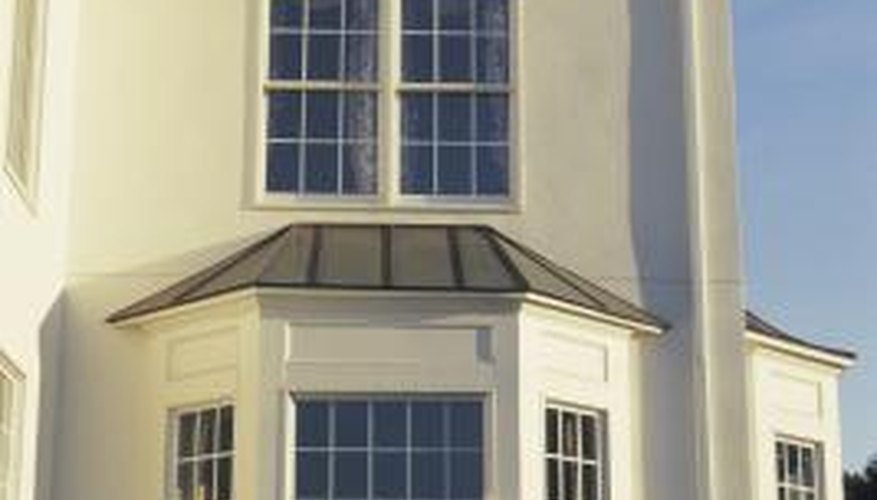In a bow window, three walls or panes set at angles project out of a room. Unlike similar bay windows, a bow window's panes may be curved, but architects describe their angles as though they were straight. Some common angles for bow and bay windows include 90, 130 and 150 degrees. Some windows use other angles as well, and you can calculate any bow window's angles by applying trigonometric ratios to the window's linear measurements.
- In a bow window, three walls or panes set at angles project out of a room.
- Unlike similar bay windows, a bow window's panes may be curved, but architects describe their angles as though they were straight.
Measure the width of the central pane. For instance, this pane may measure 25 inches.
Measure the entire bay's width. For instance, the bay may be 50 inches in width.
Subtract the central pane's width from the whole bay's width. With this example: 50 - 26 = 24 inches.
Divide this answer by 2: 24 ÷ 2 = 12 inches.
Measure the bay's depth. For instance, it may have a depth of 14 inches.
Divide the measurement from Step 4 by the measurement from Step 5: 12 ÷ 14 = 0.857.
- Subtract the central pane's width from the whole bay's width.
- Divide the measurement from Step 4 by the measurement from Step 5: 12 ÷ 14 = 0.857.
Find the inverse tangent of this ratio: tan-1(0.857) = 40.6.
Add this answer to 90: 90 + 40.6 = 130.6, or just over 130. The bow windows are set at this angle.
